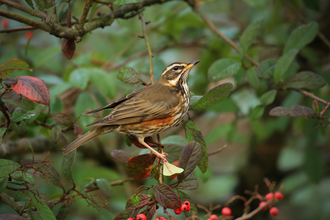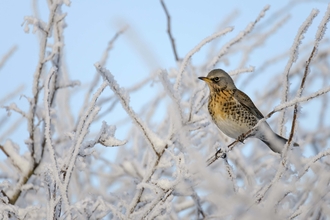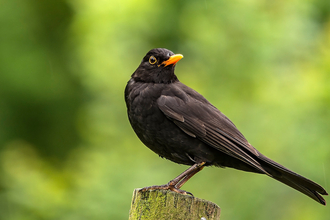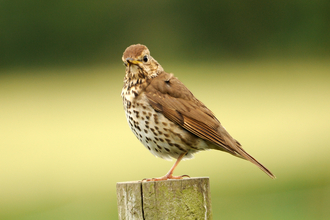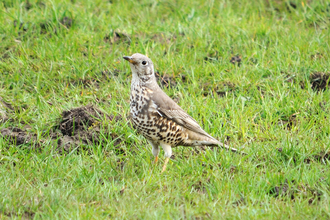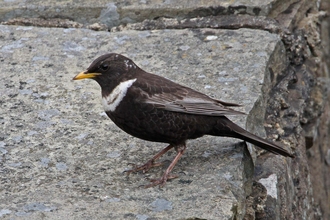Meet the thrushes
Thrushes are a group of birds that includes blackbirds, song thrushes and mistle thrushes. In the UK we have 6 species of thrush, but not all of them are here at the same time. The rare ring ouzel only spends the summer in Britain; living on remote hilltops and mountains where it nests in rocks and crags. Blackbirds, mistle and song thrushes breed in the UK and those species are resident birds who stay around all year. But the same species also inhabit the countries of far-north Europe, where the climate is fine for breeding and feeding in summer, but becomes too harsh for many by October. Scandinavian and Siberian birds flock to the UK at this point to spend their winter in slightly more comfortable conditions. More blackbirds make their way across the North Sea to avoid the frozen north for a few months to join our resident birds, but they are joined by two other types of thrush - the redwings and fieldfare. Below is a guide to telling our winter thrushes apart.
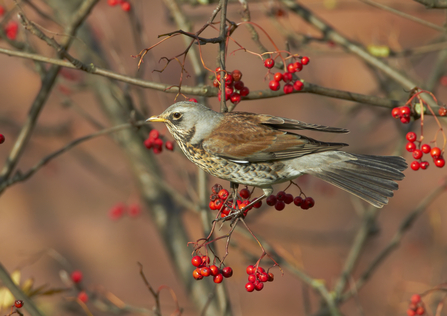
Richard Steele/2020Vision
Fieldfare
Our 2nd largest thrush is recognizable by its characteristic blue-grey head with a yellow beak, brown-grey wings and a speckled breast. They congregate in areas with abundant berry trees and depend on winter berries to sustain themselves while they are in the UK.
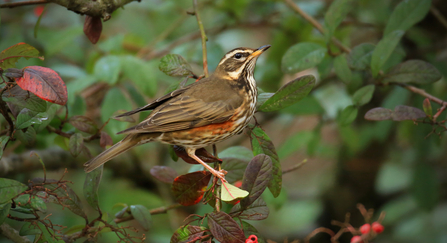
WildNet - Jon Hawkins - Surrey Hills Photography
Redwing
The smallest thrush looks similar to a song thrush, but smaller and with distinctive red patches under the wings and with a eye stripe “eye-brow”. They are social birds and will gather in flocks near food sources, even grouping with flocks of fieldfare. Both types of thrush prefer open rural land, but venture into urban areas during very cold weather or if they find berry trees in gardens and parks.
Residents
The following are the similar looking thrushes that can be seen at any time of the year in the UK.
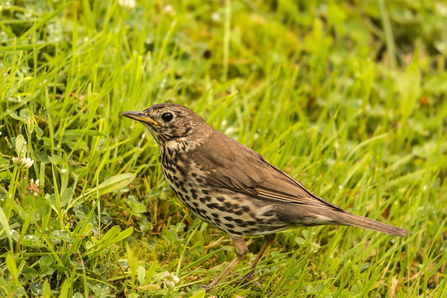
Bob Coyle
Song thrush
Song thrushes have a brown head, wings and back, with a cream breast covered in dark brown spots the shape of upside down hearts. It is around 23cm in length, slightly smaller than a blackbird. They feed on the ground and can be seen foraging for worms and grubs on lawns and fields.
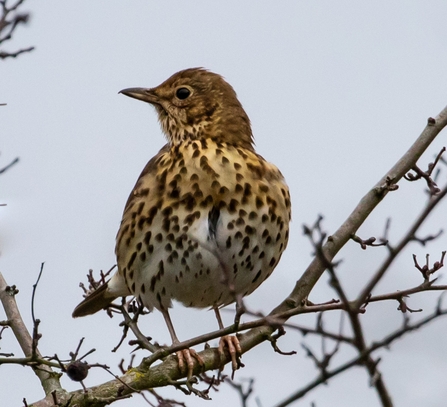
Mistle thrush
Our largest thrush, the mistle thrush, gets their name due their love of mistletoe berries. They are larger than a blackbird and have a similar mottled chest pattern to the song thrush, but have a grey tint to their backs and wings, which is noticeable when they fly. As territorial birds, mistle thrushes sing loudly from perches high in trees and bushes, to ward off other mistle thrushes from their patch.
More information
Below are links to the species hub pages of all UK thrushes, including the ring ouzel.

